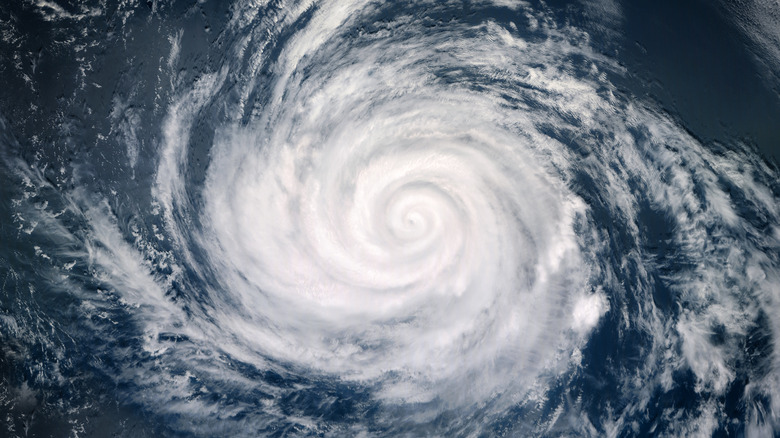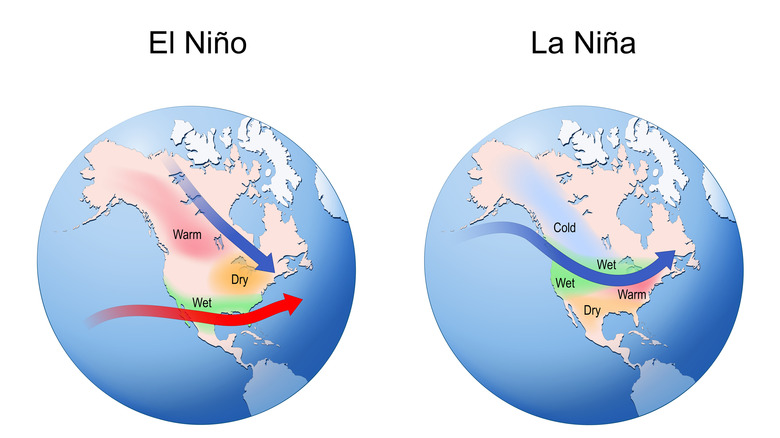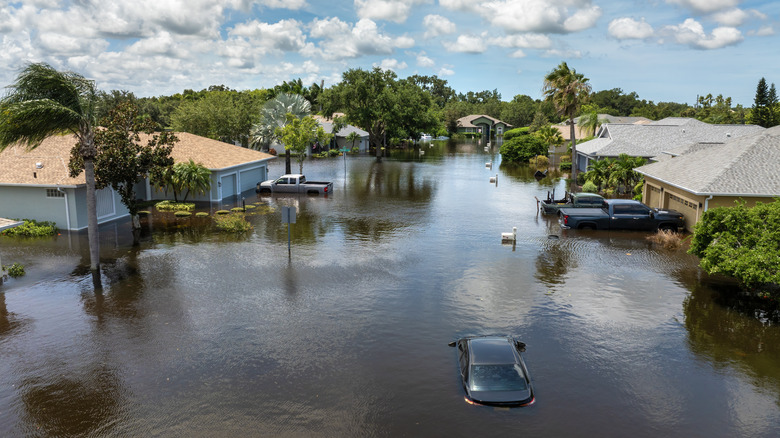What Is A La Niña Weather Event?
When checking your local weather on the news or using various weather services like your iPhone weather app, you'll sometimes hear meteorologists referencing a La Niña event as part of their forecast explanations. Though the term is used frequently, not many understand what a La Niña is, why it happens, and what that means for weather in the long term.
So, what is a La Niña weather event? In simple terms, it's a climate pattern caused by cooler water temperatures and eastward trade winds. As this pattern reaches the United States, it results in a change in weather across the country which varies depending on the particular region. It typically occurs every two to seven years, so it isn't reliable in regards to long-term predictions. Still, it is a natural climate occurrence, but it can be devastating if it is stronger than usual or occurs more frequently than expected.
Interestingly, there's quite a bit behind the name, too. La Niña is a Spanish term that literally translates to "little girl," though the weather event has no relation to that. It's said that the name came about because it's one of two parallel weather events; its opposite is known an El Niño, which has historically started around Christmas. In fact, in Spanish, while "el niño" means "little boy," it can also be used to refer to the baby Jesus Christ from the Christian religion. Because of all that, La Niña is sometimes referred to as an anti-El Niño event.
What happens during a La Niña weather event?
A La Niña begins in the tropical Pacific when the water temperature is cooler than normal. That affects the Pacific jet stream and causes it to move north. The result? In the United States, the winter is colder in the northern states and warmer in the southern states. Rainfall increases in the Pacific Northwest while, in the south, stretching from southern California to Georgia, there is less rainfall overall.
A La Niña usually lasts between nine and 12 months, though it can last longer. To predict when it might start, though, scientists from the National Oceanic and Atmospheric Administration (NOAA), use buoys. These buoys measure data from the sea-surface temperature as well as wind and currents, helping them to study things like the worrisome collapse of an Atlantic current. Scientists compare the buoy data to the Oceanic Nino Index to compare temperature changes which can help predict a La Niña weather event.
But La Niña is just one half of the El Niño-Southern Oscillation (ENSO) cycle of climate patterns. So in contrast, El Niño means there are warmer than normal temperatures in the tropical Pacific, and winters are warmer in the northern United States but colder in the southern states.
Devastation brought on by La Niña events
One recent La Niña that caused devastation was in 2020 and spurned a record-breaking, early start to the hurricane season on the East Coast. It contributed to 30 named storms with seven of them being considered major hurricanes with winds over 111 mph. Compare that to an average of three major hurricanes that usually occur during the season, and it's easy to tell how bad this was: The storms caused by La Niña resulted in massive flooding and billions in damage.
Then, between 2020 and 2023, a rare phenomenon occurred — there were three consecutive La Niña events. This led to massive drought problems in Texas, which caused issues with farm production, ultimately resulting in reduced yields. It also caused cows on these farms to not want to eat, impacting dairy production. These farms also needed water for their crops and animals, which was an added challenge during a highly dry time.
But La Niña events and their potential destructive capabilities aren't restricted to only the U.S. In 2010, a La Niña caused flooding in Queensland, Australia, forcing 10,000 people to evacuate and causing billions of dollars worth of damages. In 2020, Cyclone Yasa slammed into Fiji, fueled by a La Niña event. Considered a Category 5 cyclone, it was one of the strongest storms in Fiji's history. Events like these are a reminder that natural climate patterns like a La Niña can carry great risks with them.


